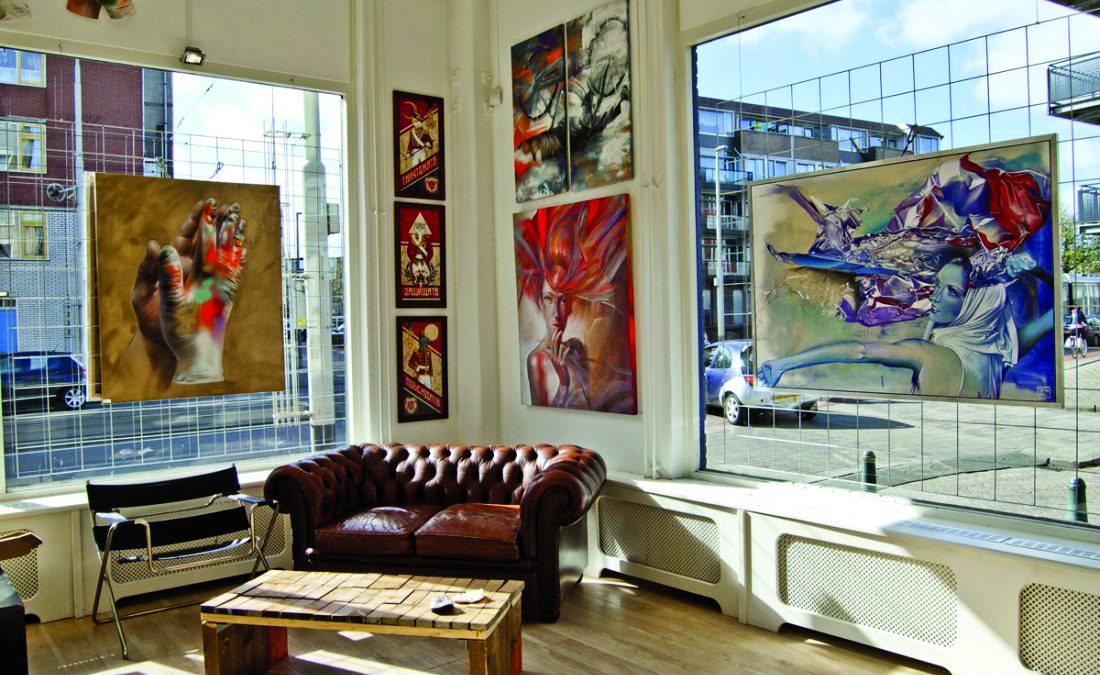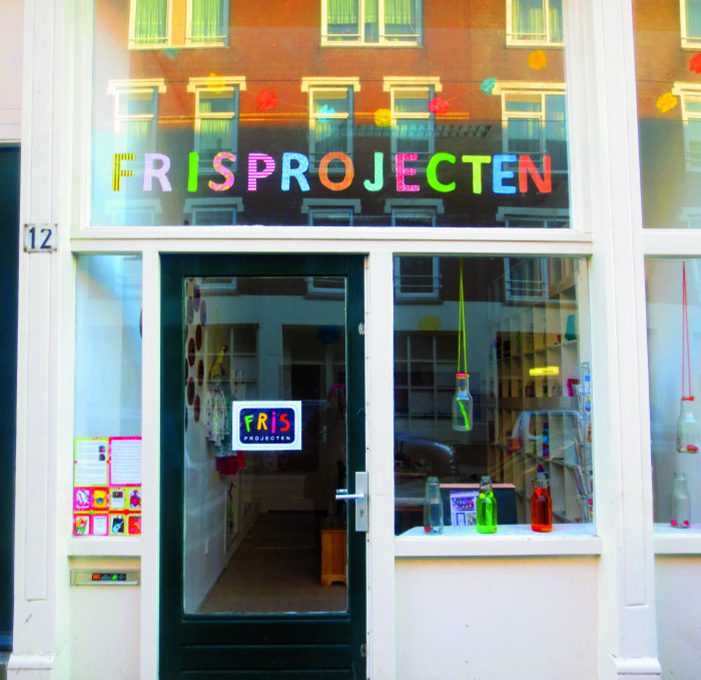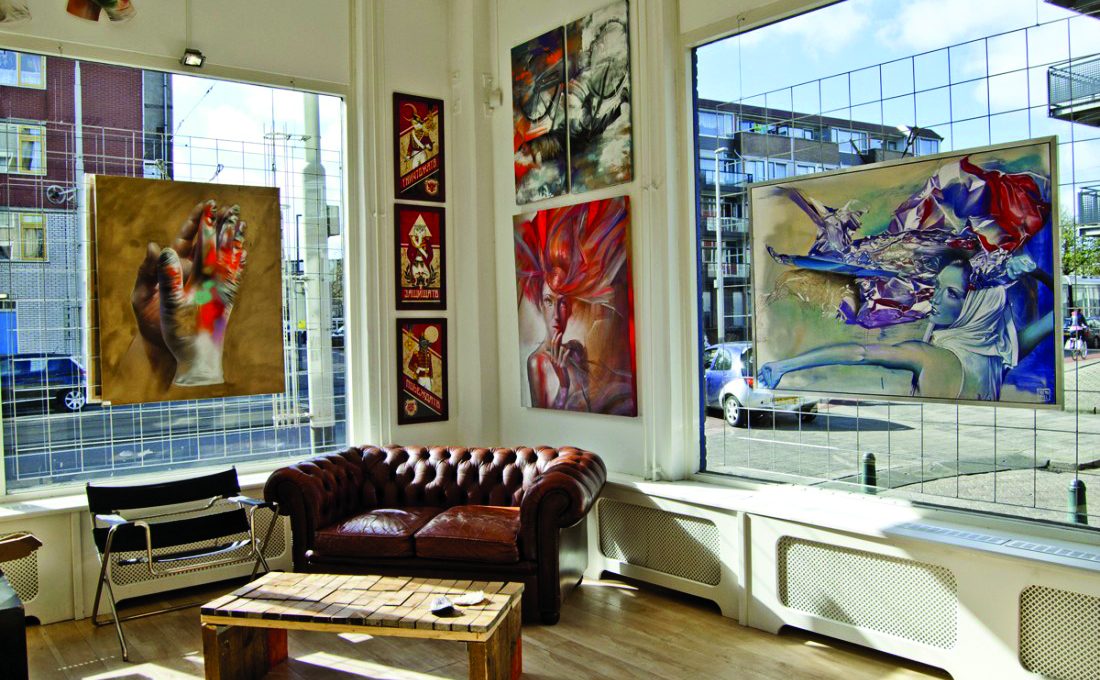
Keep up with our latest news and projects!

An empty building is a lifeless place in the city and has a negative effect on the surrounding area. Without human energy and creativity, these locations do not fruitfully contribute to the community. Good plinths, as the most visible part of the building, should be a priority to really contribute to the overall experience of the street. If done well and with the right partners, managing vacancy through temporary use is a strategic way to bring the right function to the right space. But what is vacancy management and how does it work?
A temporarily vacant building is often thought of as a liability. Vacancy management turns that around and sees these properties as assets. Vacancy means that a transition is happening; something exciting is bound to bubble up soon. Projects taken on by the community come into existence during a transition. And temporarily unoccupied or vacant buildings can form the common meeting place for these projects or a space for people to think and share knowledge—adding even more meaning and power to those connected to them.
There is no reason to design a building for a project: the process of putting the building into use is the project. Within such a context, how can an independent artist, designer, performer, researcher, or scientist use a vacant space? A building consists of different aspects: architecture, location, feeling, future, history—but the context of a building serves as inspiration for expression. The context creates an environment where people, visions, and manifestations connect, even if at first sight they had nothing in common.
The plinths of buildings determine, to a large extent, the experience of a city. A storefront that is dark and empty or an office block that looks faded and barren, are places quickly passed by. The importance of good plinths goes for mixed use plinths in neighbourhoods as well as for large scale office areas in the inner city. In a project in Rotterdam, a temporary cinema has been given space in a plinth. This cinema did not use it’s location every day, and found co-users, who helped make the location a hot spot in the area. These co-users saw potential to give better meaning to the street in front of the cinema and added a temporary skate park. This skate park led to more permanent ideas for the location. Now the building is being reconstructed into a public function, building on the lessons from the experiences with the popup cinema.
The possibilities for using the plinths relates to the context of the building, which in turn relates to the context of the street, and then of the city. In our temporary use projects, we work on these three layers. It’s important to add functions to buildings that fit the building, the street, and the city. We develop a strategy for a whole street in which the individual buildings gain new opportunities We also involve co-makers, the people using the functions, neighbours, leaders in the city with an overall view of needs for space in their sector, and the government and real estate owners. Sometimes we organise pitches, contests, or use co-makers to set strong guidelines. In the end it always comes down to: how will the city benefit?
When choosing a temporary tenant, it is important to consider the demands of the owner and the roles of the city, the urban co-makers, and the tenants.
The owner. The owner has both a long- and short-term perspective on their property. Long-term interests and short-term financial gain can conflict. If the owner owns several buildings in an area, the strategy for the use and profit for all the buildings can be different than for individual buildings. For some owners, such as housing corporations, the social value of property can be as important as the financial value. Some owners invest in their buildings, others are open for investments by their tenants. These factors influence factors such as the contract-period, rent, and target groups
The project Tussentijd began in 2012 and is a platform for “meanwhile” vacancy management. The project is a cooperation between ANNA Vastgoed & Cultuur (ANNA Real Estate & Culture), a creative vacancy management company, and Stipo, a public developer and investor in the city.
In Rotterdam, Tussentijd Rotterdam has helped housing corporation Havensteder with transformation of a former shopping area in the old working class neighbourhood (Oude Noorden) into an area of food, fashion and design, combining trendy shops and old neighbourhood shops. The housing corporation had a difficult time filling a few of the shops in less favourable locations. Tussentijd Rotterdam stepped in and leased these spaces to tenants that fit the food-fashion-design district. Some of these leases are now permanent, and the district has become stronger.
In Schiedam, next to the main railway station there was a large underused site with building locations waiting for offices and other rail orientated functions. Tussentijd helped to attract temporary tenants who fit into a permanent strategy. A education institute teamed up with local tenants to create Schieveste Activity, an area where students can practice building streets, combined with a garden, meeting points, and neighbourhood-workplace. This project attracts other education institutes who are interested, they team up, giving new energy to the area, and it might become a permanent function if they fulfil their own qualitative ambition.
 Fris projecten, Zaagmolendrift, Rotterdam, The Netherlands - © Fris Projecten
Fris projecten, Zaagmolendrift, Rotterdam, The Netherlands - © Fris Projecten
 Tussentijd Rotterdam, Jonker Fransstraat, Rotterdam, The Netherlands - © Sober Industries
Tussentijd Rotterdam, Jonker Fransstraat, Rotterdam, The Netherlands - © Sober Industries
The city. The city plays an important role in facilitation and policy-making. Temporary use often requires flexibility in what is allowed, both in terms of functions and policies. For instance, what is and is not allowed by the fire department? Is it a shop, living, or entertainment area? Late-night events would be a source of conflict in a residential area. The city considers its policies and examines potential room for flexibility. Can temporary use of vacant spaces speed up implementation of a city policy? Can an empty building in an industrial redevelopment area be temporarily available for experimental functions that represent a possible future vision of the area?
Urban co-makers and the tenants. Filling empty buildings or spaces requires finding the right tenants. One way to manoeuvre this challenge is to work together with parties who function as urban co-makers, or other urban thinkers. These parties have a different view of the future of the city, and they often know which groups in the city have the best potential for future success. Owners often have difficulty finding these groups. Furthermore, tenants or entrepreneurs who understand the area where the building is located are the right party for the building or space. Tenants can use a temporary period to experiment with renting a building. If it’s a success, a more permanent function often follows. Temporary use can also show the permanent potentials of a forgotten place in the city. Using and filling vacant buildings or spaces can help an area or the city, but can also be a threat for existing or nearby tenants as well as the leasing system.
Interested? Join The City At Eye Level and share your story!
Discover moreTemporary use is not an easy solution as it goes against established systems and routines, and it often causes uncertainty and requires a new set of skills. With the right methods and goals, temporary use can be a win-win for all parties involved: a permanent boost for the city that also benefits property owners and entrepreneurs.